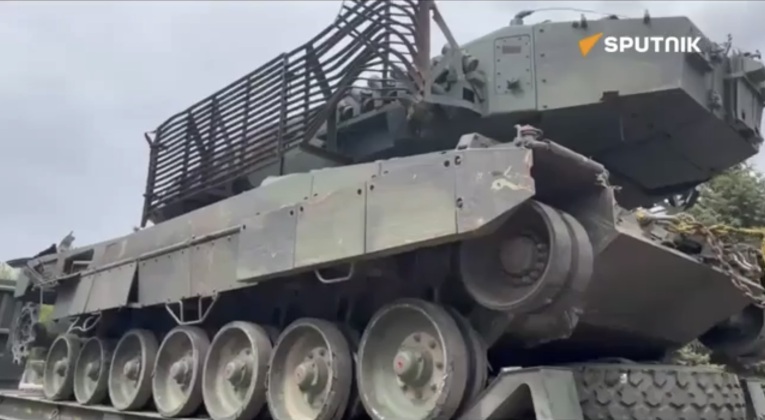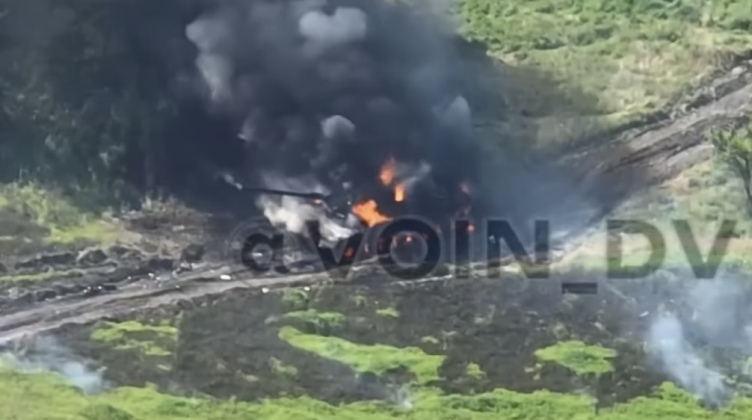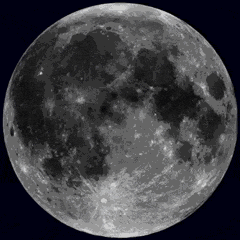Following video confirmation on April 21 that Russian ground units had captured a Leopard 2A6 tank during clashes with Ukrainian forces, new footage and information have provided further details on the operation and the future of the vehicle. The Leopard 2A6 is by far the most capable variant of the Leopard 2 provided to Ukraine, and among European tank classes is surpassed in its capabilities only by a small number of Leopard 2A7s that entered service from 2014. The vehicle is thus considered far more valuable than the much older Leopard 2A4s previously captured. The captured tank is widely considered the most capable in the Ukrainian inventory, closely rivalled by half a dozen indigenous T-84 tanks, but surpassing the American M1A1 Abrams tanks which were delivered with heavily downgraded armour and fire controls, and the British Challenger 2 which used dated fire controls and particularly old thermal sights.

New footage released by the Russian Ministry of Defence has shown the captured Leopard 2A6 in the in the disputed Avdiivka region, which is claimed by both Russian and Ukraine. “A military repair division delivered a German Leopard tank from the Avdeyevka [Avdiivka] front lines to a maintenance unit of Battlegroup Tsentr [Centre],” the ministry confirmed on April 23. “Maintenance staff will shortly replace the tank’s crawler tracks and some of its wiring components, at which point the tank’s further transportation will be settled,” the statement added. The Defence Ministry highlighted that evacuation of the prized vehicle had been carried out in two stages: the first involving scouting out the surrounding area for potential threats to the personnel and equipment that would be used the evacuation, and the second involving the evacuation itself. Avdiivka has been a centre of fighting between Russian and Ukrainian forces since late 2023, with Ukrainian forces filmed making a disordered retreat from the strategically located town in February, shortly after which footage confirmed the first deployment of newly supplied M1 Abrams tanks which quickly took heavy losses in combat.

Footage released by Russian state media has in the past confirmed that Western military equipment supplied to Ukraine has been studied in detail in Russia, with American Bradley Infantry Fighting Vehicles having fallen into Russian hands in particularly large numbers often with up to date fire controls and protection systems. The vehicles were modernised in the U.S. shortly before their delivery to Ukraine. While the intelligence value of access to the Leopard 2A4 was expected to be limited, with the class long since considered out of date despite being widely depended by NATO members such as Spain, Turkey and Poland, the value of access to the Leopard 2A6 remains high. Russian forces have already gained considerable intelligence on the tank class through experience operating against it, with the Leopard 2A6 being among the very first Western-supplied vehicles filmed disabled and destroyed by Russian forces during mass offensives against Russian positions from early June 2023, when the class made its combat debut.

The release of new details on the capture of the Leopard 2A6 comes as growing quantities of footage have shown captured Western armour arriving in the Russian capital Moscow. These vehicles are expected to play a prominent role in the upcoming Victory Day parade on May 9 celebrating 79 years since the Soviet defeat of Nazi Germany. Vehicles seen so far have included Bradleys, German-made Marder infantry fighting vehicles, and American M113 armoured personnel carriers, as well as the Ukrainian-made ‘Avocets’ armoured vehicle. The presence of a Leopard 2, however, would have particular high symbolic value, not only due to its recognisability as one of NATO’s two primary main battle tanks, but also because of the vehicle’s heritage from the Nazi era. Russian sources have consistently highlighted parallels between the role of Leopard tanks in Ukrainian offensives, and the previous offensives launched by German and allied European forces in the 1940s using the class’ direct predecessors the Panther and Tiger. Local sources have speculated that the captured Western vehicles could later be displayed at Kubinka Tank Museum after being studied.
